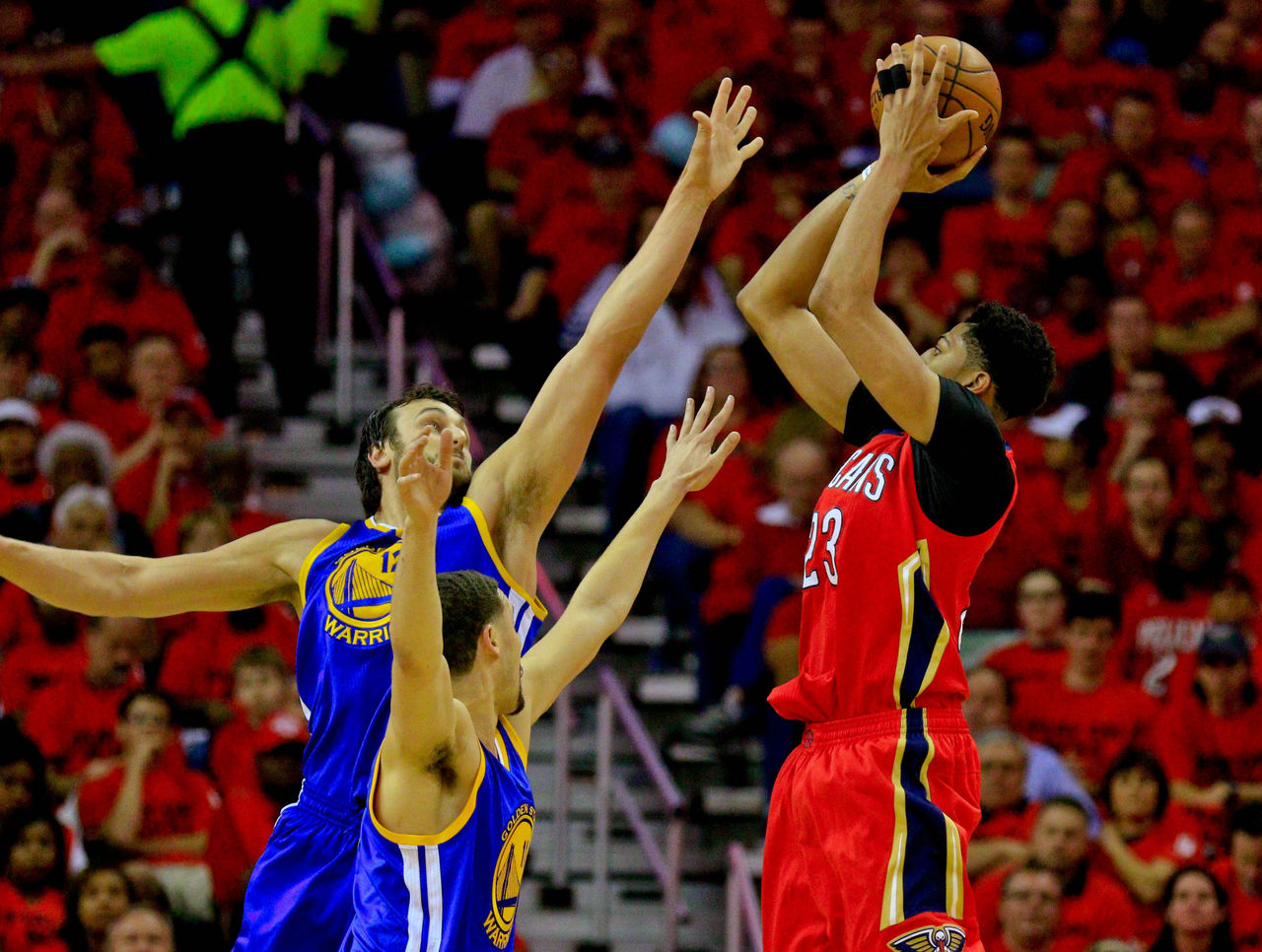How Alvin Gentry helps Anthony Davis
Alvin Gentry has officially been New Orleans Pelicans head coach for about 12 hours, but the basketball world is already abuzz about how the offensive innovator might take advantage of the freakish talent of Anthony Davis.
One of the most cited reports in the immediate aftermath of Gentry's hiring comes from CSN Bay Area's Monte Pool, revealing that Gentry presented Pelicans general manager Dell Demps and vice president Mickey Loomis with charts and graphs illustrating how the team has underutilized Davis's offensive skills.
That's led many to assume Davis will feature more prominently in the Pelicans' offense next season, but it will likely be in subtle ways, not always visible to the casual observer.
A standard look at some of the advanced metrics available tell the story of a superstar player already bearing a heavy offensive burden.
| Anthony Davis | FGA per game (rank) | FGA per 100 poss. (rank) | Usage % (rank) |
|---|---|---|---|
| 2014-15 | 17.6 (6th) | 25.7 (11th) | 27.8 (13th) |
Davis's usage could certainly creep closer to the 30-percent mark under Gentry, and many will wonder why he's not already in the top 10 in terms of field goals attempted per-100 possessions - but it's worth noting his 25.7 attempts were more than high-usage, ball-dominant guards like Stephen Curry and Monta Ellis.
When a bright, modernized offensive mind like Gentry says "underutilized," he's not necessarily screaming, "MORE SHOTS!" In all likelihood, Gentry's thinking more along the lines of getting Davis better shots and getting him more involved in the flow of the offense.
Through three seasons, Davis has shot 11 percent on a grand total of 27 3-point attempts. But The Brow has shown that he has range with his jumper, and if Gentry can help him extend that range beyond the perimeter, it will further overwhelm the youngster's helpless opponents.
28.9 percent of Davis's field-goal attempts this season came on two-pointers longer than 16 feet, and he converted nearly 42 percent from that territory - an excellent mark from the game's least efficient space. Imagine some of that dispersed to an area of the court where made baskets yield an extra point (and only one percent of Davis's shots came from this season).

In addition to developing a 3-point shot and getting Davis more easy opportunities in transition - you can rest assured that Gentry's Pelicans will play much faster than Monty Williams's 27th-ranked pace - Gentry will almost certainly look to get Davis more involved in the overall offense.
As the Golden State Warriors de facto offensive coordinator, Gentry got the best out of a ridiculously talented Golden State team that never scored as prolifically as they should have under Mark Jackson. A key component of that offensive improvement was better utilizing the talents of center Andrew Bogut.
Bogut is a defensive force when healthy, but his passing, playmaking and offensive smarts are underrated facets of his game, and Gentry took advantage of it. You just wouldn't know it by looking at Bogut's basic numbers.
| Andrew Bogut | PPG | FGA per game | FGA per 100 poss. | Usage % |
|---|---|---|---|---|
| 2012-14 | 6.8 | 5.6 | 11 | 12.7 |
| 2014-15 | 6.3 | 5.3 | 11 | 13.2 |
While he wasn't scoring the ball or shooting the ball any more in 2014-15 than he was in 2013-14, Bogut was certainly touching it more. The per-game increase seems minimal - 41.5 touches compared to 40. However, considering he played nearly 200 fewer minutes this season, Bogut's touches per minute actually increased nearly 16 percent from his last season under Jackson to his first under Gentry (and Steve Kerr, of course).
With The Brow's own passing and playmaking abilities developing - he's improved his assist percentage while lowering his turnover rate each year as his usage has increased - Gentry can certainly find more touches within the offense for Davis, whose 71 per game were fifth among big men behind Blake Griffin (100.9), Marc Gasol (86.7), Joakim Noah (77.1), and Tim Duncan (71.6).
The wheels are already turning in Gentry's offensive mind, and it's exciting to think about what a 22-year-old coming off a 30-plus PER season might do with even modest improvements in his usage, range, shot selection, and touches.
(Stats courtesy: Basketball Reference and SportVU Player Tracking)